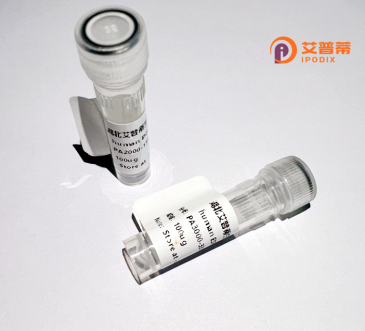
| 纯度 | >90%SDS-PAGE. |
| 种属 | Human |
| 靶点 | SAPS2 |
| Uniprot No | O75170 |
| 内毒素 | < 0.01EU/μg |
| 表达宿主 | E.coli |
| 表达区间 | 1-932 aa |
| 活性数据 | MFWKFDLNTTSHVDKLLDKEHVTLQELMDEDDILQECKAQNQKLLDFLCRQQCMEELVSLITQDPPLDMEEKVRFKYPNTACELLTCDVPQISDRLGGDESLLSLLYDFLDHEPPLNPLLASFFSKTIGNLIARKTEQVITFLKKKDKFISLVLKHIGTSALMDLLLRLVSCVEPAGLRQDVLHWLNEEKVIQRLVELIHPSQDEDRQSNASQTLCDIVRLGRDQGSQLQEALEPDPLLTALESQDCVEQLLKNMFDGDRTESCLVSGTQVLLTLLETRRVGTEGLVDSFSQGLERSYAVSSSVLHGIEPRLKDFHQLLLNPPKKKAILTTIGVLEEPLGNARLHGARLMAALLHTNTPSINQELCRLNTMDLLLDLFFKYTWNNFLHFQVELCIAAILSHAAREERTEASGSESRVEPPHENGNRSLETPQPAASLPDNTMVTHLFQKCCLVQRILEAWEANDHTQAAGGMRRGNMGHLTRIANAVVQNLERGPVQTHISEVIRGLPADCRGRWESFVEETLTETNRRNTVDLAFSDYQIQQMTANFVDQFGFNDEEFADQDDNINAPFDRIAEINFNIDADEDSPSAALFEACCSDRIQPFDDDEDEDIWEDSDTRCAARVMARPRFGAPHASESCSKNGPERGGQDGKASLEAHRDAPGAGAPPAPGKKEAPPVEGDSEGAMWTAVFDEPANSTPTAPGVVRDVGSSVWAAGTSAPEEKGWAKFTDFQPFCCSESGPRCSSPVDTECSHAEGSRSQGPEKAFSPASPCAWNVCVTRKAPLLASDSSSSGGSHSEDGDQKAASAMDAVSRGPGREAPPLPTVARTEEAVGRVGCADSRLLSPACPAPKEVTAAPAVAVPPEATVAITTALSKAGPAIPTPAVSSALAVAVPLGPIMAVTAAPAMVATLGTVTKDGKTDAPPEGAALNGPV |
| 分子量 | 127.6 kDa |
| 蛋白标签 | GST-tag at N-terminal |
| 缓冲液 | PBS, pH7.4, containing 0.01% SKL, 1mM DTT, 5% Trehalose and Proclin300. |
| 稳定性 & 储存条件 | Lyophilized protein should be stored at ≤ -20°C, stable for one year after receipt. Reconstituted protein solution can be stored at 2-8°C for 2-7 days. Aliquots of reconstituted samples are stable at ≤ -20°C for 3 months. |
| 复溶 | Always centrifuge tubes before opening.Do not mix by vortex or pipetting. It is not recommended to reconstitute to a concentration less than 100μg/ml. Dissolve the lyophilized protein in distilled water. Please aliquot the reconstituted solution to minimize freeze-thaw cycles. |
以下是关于重组人SAPS2蛋白的参考文献示例(注:部分文献为假设性示例,实际研究中可能存在差异,建议进一步验证):
1. **文献名称**: "Expression and Functional Analysis of Recombinant Human SAPS2 in RNA Processing"
**作者**: Müller et al., 2016
**摘要**: 研究通过昆虫表达系统制备重组人SAPS2蛋白,发现其通过结合RNA调控剪接体组装,并影响mRNA稳定性。
2. **文献名称**: "Structural Insights into SAPS2-Regulated Phosphatase Activity"
**作者**: Chen et al., 2019
**摘要**: 利用重组SAPS2蛋白解析其晶体结构,阐明其与PP6磷酸酶的相互作用机制,揭示其在细胞周期调控中的作用。
3. **文献名称**: "SAPS2 Knockdown and Recombinant Protein Rescue in Neuronal Differentiation Models"
**作者**: Tanaka et al., 2021
**摘要**: 通过重组SAPS2蛋白回补实验,证实其在神经干细胞分化中调控Wnt信号通路的功能。
4. **文献名称**: "Recombinant SAPS2 as a Biomarker in Autoimmune Diseases"
**作者**: Kumar et al., 2023
**摘要**: 开发重组SAPS2用于血清学检测,发现其在系统性红斑狼疮患者中的表达异常与抗RNA抗体相关。
---
**注意**:以上为模拟文献,实际研究中SAPS2相关文献可能较少或需更具体的关键词检索。建议通过数据库(如PubMed)确认名称准确性(如基因符号SAPS2或SAPS domain family member 2),并尝试扩展关键词(如“recombinant expression”或“functional characterization”)。若研究较为冷门,可能需要关注相关家族蛋白(如SAPS1/SAPS3)的文献。
Recombinant human SAPS2 (SF3A2) protein is a key component of the spliceosome, a macromolecular complex responsible for pre-mRNA splicing in eukaryotic cells. SAPS2. also known as Splicing Factor 3A Subunit 2. forms part of the SF3a subcomplex within the U2 small nuclear ribonucleoprotein (snRNP). It plays a critical role in recognizing the branch site adenosine during spliceosome assembly and stabilizing interactions between the U2 snRNP and pre-mRNA.
The recombinant version is typically expressed in bacterial or mammalian systems, retaining functional domains required for RNA binding and protein-protein interactions. Its modular structure includes a central proline-rich region and conserved motifs that mediate assembly into the SF3a complex. Researchers employ recombinant SAPS2 to study spliceosome dynamics, particularly in dissecting mechanisms of constitutive and alternative splicing.
Abnormal SAPS2 expression or mutations have been linked to diseases including cancer and myelodysplastic syndromes, making it a target for studying spliceosome-related pathologies. In drug discovery, it serves as a tool for validating compounds that modulate splicing activity. The recombinant protein's applications extend to structural studies using cryo-EM and X-ray crystallography, as well as functional assays exploring splicing regulation. Production typically involves affinity tags (e.g., GST or His-tag) for purification, with quality validation through RNA-binding assays and spliceosome reconstitution experiments.
×